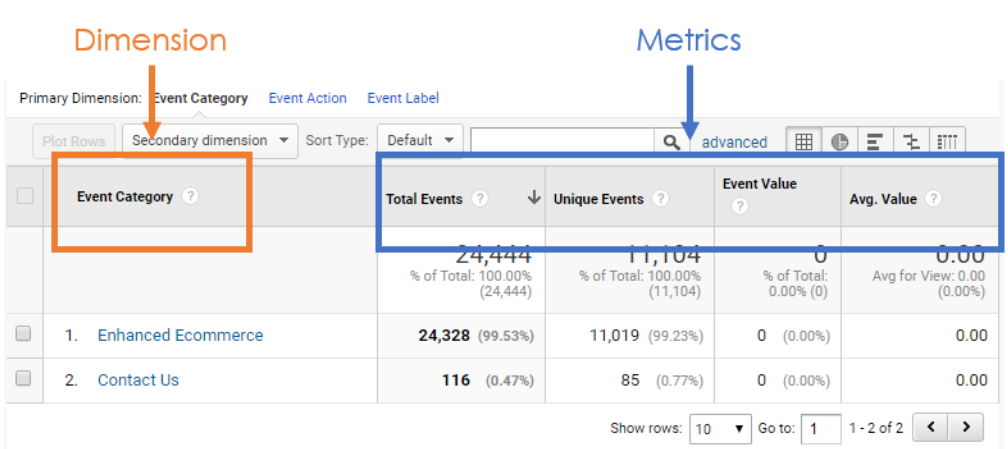Do you make all your decisions based on analysing your data in aggregate?
Analysing top level data is an incredibly useful way to get an idea of the top level trends on your website, however it does not tell the whole story.
Secondary Dimensions are a real asset in improving the cardinality of Google Analytics reports.
They allow the data to be broken down in different ways and allow you to look into at deeper levels. You can gain insight into what is going on, and find anomalies you didn’t know existed.
What is a Secondary Dimension?
A secondary dimension is pretty much what it says on the tin.
In most Google Analytics reports, you are presented with a table giving data points for a set of dimensions across multiple metrics.
A secondary dimension adds another dimension to the table.
Google’s definition is that a secondary dimension is ‘the key value that provides an additional level of sorting and/or aggregation in your report’.
How to use a Secondary Dimension?
Above the table, there is a drop down selector for Secondary Dimensions.
There are suggested options, but you can choose from any compatible dimension that Google Analytics offers.
Once you have applied a Secondary Dimension, these rows can be plotted or filtered using advanced filtering to further organise your report.
Example reports and Secondary Dimensions
Here are just a few example report configurations where secondary dimensions are really useful….
Get a better overview of event tracking:
Behaviour > Events > Top Events. Primary dimension of Event Category, secondary dimension of Event Action.OR
Drill down into an Event Category, use a primary dimension of Event Action and a secondary dimension of Event Label.
Useful for troubleshooting UX issues:
Audience > Technology > Browser & OS. Primary dimension of Browser, secondary dimension of Device Category.
Allows you to see where each Source/Medium is driving traffic to on your site:Acquisition > All Traffic > Source/Medium. Add secondary dimension of Landing Page.
Here you can see exactly where referrals to your site have come in from:Acquisition > All Traffic > Referrals. Primary dimension of source, secondary dimension of referral path.
See which landing pages your Paid Keywords are sending traffic to, you can breakdown performance by the keyword:Acquisition > Campaigns > Paid Keywords. Add secondary dimension of Landing Page.
Filter by the page title shown on 404 pages to show internal pages with broken links:Behaviour > Site Content > All Pages. Primary dimension of Page Title, secondary dimension of previous page path.



